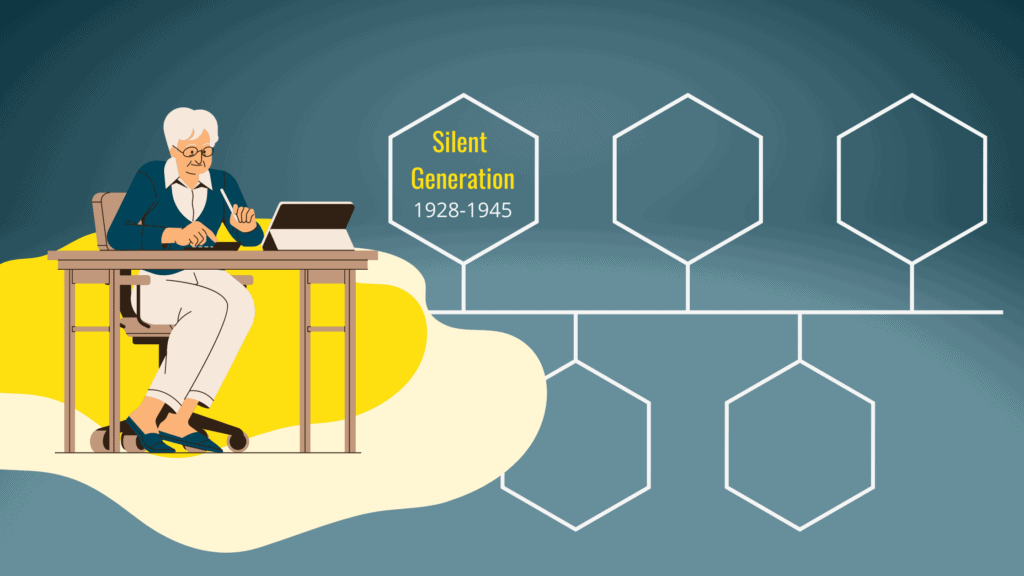The Silent Generation in the Workplace

The Silent Generation in the Workplace
Disclaimer: All of these characteristics are generalizations and by no means define each person within the age group. Rather, it’s an amalgamation of various data sources, opinions, and anecdotal evidence used to create a basic profile that simplifies the nuances of generational diversity.
The Silent Generation
Born between 1928 and 1945, the Silent Generation grew up in tumultuous times, raised by parents who had endured the Great Depression only to get swept up in World War II and the Korean War immediately after. These events uprooted the family dynamic of years past, with mothers joining the workforce en masse to fill in the gaps left behind by their soldier husbands.
As they grew up, over half a million Traditionalists spent time in America’s first daycare centers, subsidized by the government to assist previously stay-at-home moms help with the war efforts in factories. There, they become the first generation to gain invaluable, formalized early childhood education.
Despite that, it was soon back to business as usual, with the nuclear family– specifically the mother– serving as the core of the household.
Later, they saw some of the nation’s greatest technological advancements come to fruition in the form of home television sets, which brought news of the Space Race as the Cold War settled into an anxious stalemate.
Through this early medium, they heard messages of America as a beacon of freedom, justice, and individual rights in sharp contrast to communist Russia.
Ironically, McCarthyism’s ironfisted call for conformity under the banner of the American dream encouraged them to keep their heads down, their mouths shut, and their habits “normal,” lest they be accused of supporting communist efforts for speaking out against authority.
Other names for the Silent Generation include Traditionalists, Radio Babies, and the Lucky Few. They currently make up 2% of the total workforce.
Common Traits
- Savers, not spenders
- Loyalty to a lifelong career
- Straightforward and honest
- Hard work
- Resilience
- Traditional family and workplace roles
- Obedient
- Stable
- Believe social connections are key to health and happiness
Values
- Respect based on seniority, age, and position
- Discipline
- Responsibility over leisure
- Work ethic conquers all; if you’re struggling financially, you’re not working hard enough.
- Patriotism
- Loyalty
- Conformity
Workplace Expectations
- No one rocks the boat
- They are a part of the company, not an individual within the company
- Compliance and sacrifice are necessary for the greater good
- Work is not supposed to be fun, it’s an obligation to be taken seriously
- Communication is centered on face-to-face interactions, not emails
- Feedback is private, discrete, and not expected.
Ideal Work Environment
- Task-based and highly structured
- Clearly defined expectations and roles
- A linear workday; “9-5”
- Top-down hierarchical management
- Respect is required, not earned, from subordinates
- Generous retirement benefits packages and rewards for their diligent financial planning
Strengths
- Highly disciplined and dependable
- Loyal
- Have a robust repertoire of work and life experiences to inform decisionmaking
Weaknesses
- Resistant to change; “if it’s not broken, don’t fix it.”
- Tend to think of things as black and white
- Believe age and experience matter more than talent or including younger workers for the sake of multigenerational diversity.